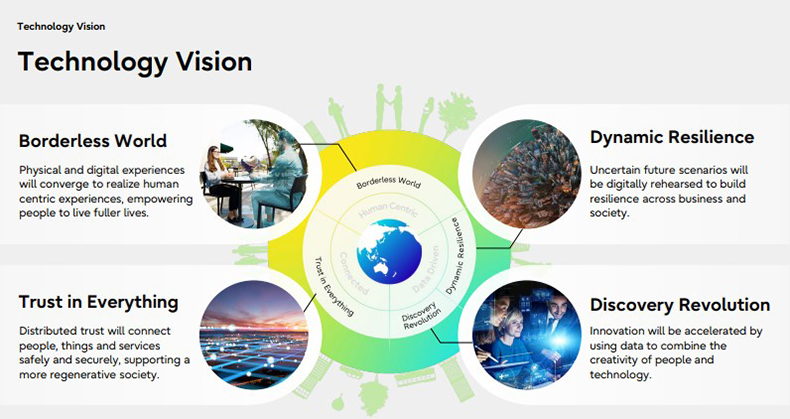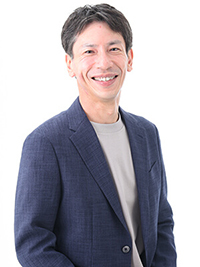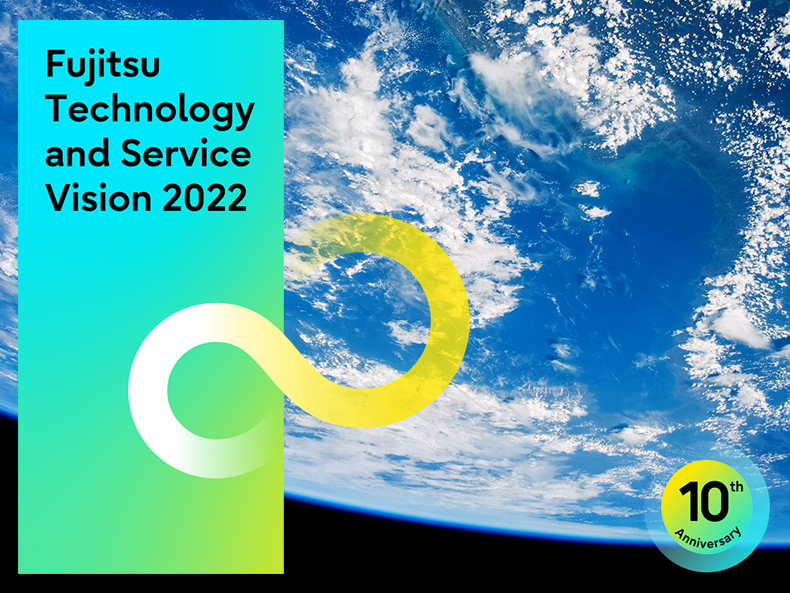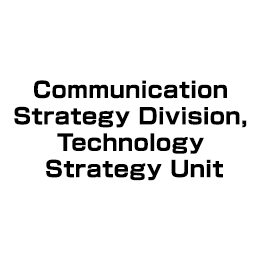The Fujitsu Technology and Service Vision (FT&SV) is Fujitsu's annual thought leadership on what kind of future we want to achieve with our customers and partners, how technology can empower people to realize that vision, and how we can achieve our goals. This year marks the 10th anniversary of the FT&SV since its first publication in 2013. We interviewed Hiroshi Nishikawa, Senior Director of Fujitsu’s Communication Strategy Division responsible for the development of FT&SV 2022, about Fujitsu’s ongoing efforts to help develop a more sustainable future.
- Table of Contents
The Last 10 Years: The Secret of Continuation and the Upcoming Challenges
――This year marks the 10th year since Fujitsu published its first FT&SV in 2013. During that time, Fujitsu has continued to publish the FT&SV every year. So, what do you think about the last 10 years, has Fujitsu been able to contribute to realize a society you envisioned back then?
Nishikawa: In the original FT&SV in 2013, we announced Fujitsu's vision for future society: Human Centric Intelligent Society. This means an intelligent, human-centered society supported by technology. A decade has passed since then, and although we have not yet achieved such a society, the vision is certainly more concrete than it was 10 years ago and there are now many practical examples of that future which we expected. For example, the extension of healthy life expectancy through IT drug discovery, autonomous driving, and smart mobility using EVs are just some examples of how technology is supporting people and society. In addition, due to the Covid-19 pandemic, society has made great progress in digitalization with telework, telemedicine, and distance education becoming a new normal.

――Our present society is close to the world you envisioned in that first report, and the evolution of technology is contributing greatly to realize that world. How do you feel about the new forms of co-creation with clients and the transformation of Fujitsu itself?
Nishikawa: In terms of co-creation, I think it is important to note that the keyword "ecosystem" is now commonly used in Japan. Companies with an interest in the bigger purpose of solving complex social issues have gathered together, recognizing the importance of sharing the value they possess to expand their business and contribute to society. Fujitsu are promoting co-creation on a range of themes such as space debris observation, water, food security, and safety.
With regard to internal transformation, in the past few years in particular, Fujitsu has implemented a range of initiatives. These include initiatives to support the alignment of our corporate Purpose with employees’ own individual purpose; Work Life Shift, which promotes work style transformation; and Fujitra, which drives company-wide transformation. I believe that Fujitsu's transformation efforts are being conveyed to our customers as well as to our employees, who are themselves at the center of the transformation.
――Some companies establish their path and vision but once that is done, they leave these as they are and don't review the story and the means to realize it. Why has Fujitsu continued to update its FT&SV every year since 2013? And what have you been able to achieve this continuation?
Nishikawa: I believe that our medium- to long-term goals as a company will not change, and the content of our vision for future society, such as Human Centric Intelligent Society, which we outlined in our first FT&SV 10 years ago, has not changed significantly. The concept of comprehensively introducing Fujitsu's services and technologies into society, which are the means to realize our vision, has not changed either.
On the other hand, over the course of three, five, or ten years, we believe that continuing to demonstrate our progress and our efforts to realize our vision will lead to co-creation with customers and foster empathy among our employees. For this reason, over the past 10 years, we have continued to introduce new ideas that are relevant at that time, and also demonstrate where we have been making progress. For example, we explored the themes of digital transformation (the new industrial revolution) in 2016, co-creation in 2017-18, and trust in 2019. Each of these are important keywords that reflect the times we are living in, and we are proud that we have been able to become closer with our customers and employees by doing this. At the same time, technology is evolving rapidly, and we have covered the evolution and use cases of AI as well as quantum computing, which we did not feature in the original 2013 report. I believe that introducing both our steady progress in areas we focus, and our changes to keep up with the evolution of business and technology has led to our continued success.

――Are there any things that you have not been able to accomplish in the last 10 years or any new challenges that you have seen that you’d like to take on?
Nishikawa: There are many issues in the field of IT, and I think there are many business domains where digital transformation (hereafter DX) initiatives are just beginning. With that in mind, I think there is still a gap between the world presented in our vision of solving social issues through business and the actual real-world issues that need to be addressed. On the other hand, when the Sustainable Development Goals (SDGs) were set in 2015, they were still quite distant at 15 years away, but now we in the position where we are less than 10 years away from 2030, and there are very strong demands from society and government for companies to accelerate their SDG-related efforts.
Furthermore, issues like Covid-19 and geopolitical conflicts, which show no signs of ending, question the validity of the positive message that people and societies can be prosperous and sustainable. The negative impacts of technology, such as causing information and economic inequality and its significant energy consumption, are becoming a big issue.
――So, over the past 10 years, we've seen developments such as the evolution of digital technology, as well as new challenges that have emerged.
The Next 10 Years: Key Messages of FT&SV 2022
――What is the difference between FT&SV 2022 and previous years’ FT&SV in relation to achieving the SDGs by 2030?
Nishikawa: As I said when looking back over the past 10 years, there are some things that we did not change and some things that we have changed. Fujitsu announced its Purpose in 2020 and our vision remains unchanged from the world we envisioned at that point. We will continue to focus on three areas: the importance of corporate social responsibility (CSR), the SDGs, and environmental, social, and corporate governance (ESG); supporting people and solving social issues through technology; and contributing to business and society using Fujitsu's technology and services; and these areas remained central in this year’s FT&SV.
We have also added the following three new enhancements to those three areas in the FT&SV 2022.
Firstly, the current report highlights that IT, DX, and SX (sustainability transformation) initiatives are interlinked, and that IT and DX initiatives lead to sustainability. Module 2 of the FT&SV 2022 (Technology Vision) shows how the exponentially improving computing performance will accelerate innovation and help solve social problems. The Global Sustainability Transformation Survey Report released in June of this year also showed that DX initiatives are linked to SX. Therefore, rather than looking at IT, DX, and SX individually, it is important to recognize that these are interconnected.
Secondly, this year’s report articulated four visions of how digital technology will impact and transform business and society over the next decade. These are: physical and digital convergence with no boundary (Borderless World), safety and security (Dynamic Resilience), the acceleration of innovation (Discovery Revolution), and an increase in trust (Trust in Everything). By clearly outlining technology vision, we anticipate that we will be able to engage in more concrete discussions and initiatives for co-creation with our clients than ever before.

Lastly, we have strengthened the link between our vision and our activities so that our customers and employees can visualize how our current initiatives will lead to a sustainable future society. In October 2021, Fujitsu published its Fujitsu Uvance brand, with the purpose of strengthening our cross-industry initiatives. Going forward, we will bring our vision to reality by strengthening specific initiatives such as sustainable manufacturing that contributes to carbon neutrality and the reduction of food loss, personalized customer experiences and public services, and the extension of healthy lifespans via a shift from treatment to prevention.
Feedback to FT&SV and Future Outlook
――Two months have passed since the FT&SV 2022 was released on May 16. What has been the feedback from customers and employees?
Nishikawa: Following the FT&SV 2022, Fujitsu released its Global Sustainability Transformation Survey Report on June 28. The sustainability transformation that we outlined there have been well received by our customers. For example, we received feedback from a customer in the banking industry who was impressed by our digital initiatives in the IT field. Our message also resonated strongly with one of our customers in the retail field who has their own manufacturing division, promotes recycling as part their business, and embodies a cross-industry approach to sustainability. We also received positive feedback from our employees, who said that they better understand our approach to solving social issues and how it relates to their own work, and also expressed that they would like to contribute to the FT&SV initiatives themselves.
――Lastly, please tell us about your initiatives and plans for the future.
Nishikawa: At present, we have only received responses from employees in a few countries and from a few of our customers, so we will continue to strengthen our efforts to deliver our message more widely. By doing so, we believe that Fujitsu’s Purpose and vision will resonate with our customers and employees and they will be motivated to take action to help resolve social issues. It can be said that Japan is lagging behind in terms of DX, but the definition of SX is still not clear, and as our Global Sustainability Transformation Report Survey revealed, the degree of maturity in this respect varies considerably from company to company. We will continue to promote our FT&SV and other initiatives so that Japan and Japanese companies can become leaders in these fields.

Hiroshi Nishikawa,
Senior Director, Communication Strategy Division,
Technology Strategy Unit, Fujitsu Limited




